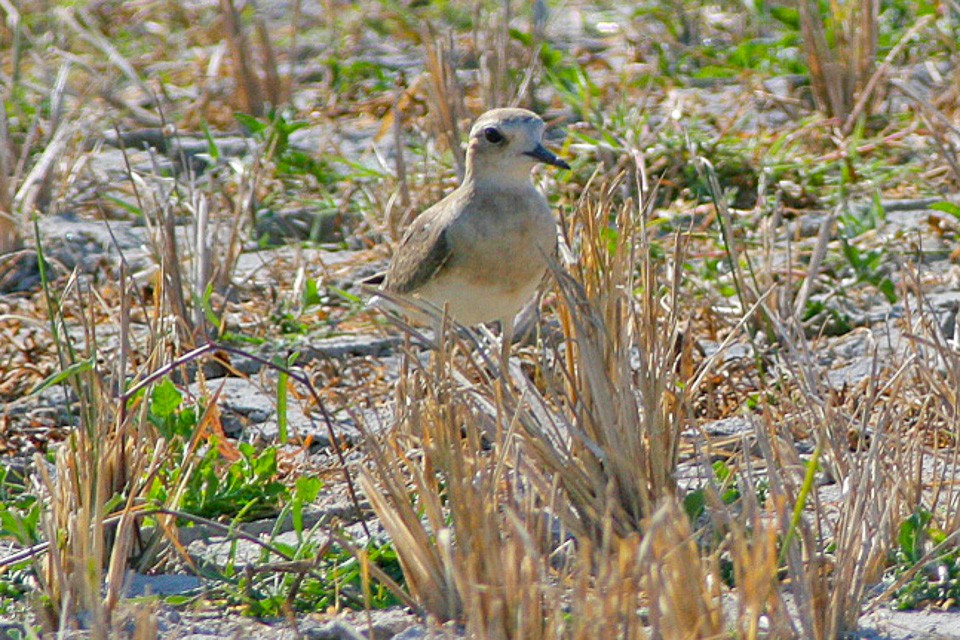Oriental Plover
A species of Typical plovers Scientific name : Charadrius veredus Genus : Typical plovers
Oriental Plover, A species of Typical plovers
Botanical name: Charadrius veredus
Genus: Typical plovers
Content
Description General Info
Description
Adult male in breeding plumage: white face, throat and fore-crown; grey-brown hind-crown, hind-neck and back; belly white, demarcated with narrow black band and then broad chestnut breast band merging into white throat. Female, juvenile and non-breeding male: generally grey-brown upperparts and white belly; pale face with white streak above eye. Measurements: length 21–25 cm; wingspan 46–53 cm; weight 95 g. Among the redbreasted Charadrius plovers, this bird is relatively large, longlegged and long-winged. 
Size
23 - 41 cm
Nest Placement
Ground
Feeding Habits
Oriental Plover primarily consumes beetles, termites, grasshoppers, bugs, snails, and seeds. Oriental Plover forages by running and pausing on the ground, capitalizing on its agility to catch prey. Unique adaptations include a preference for sensing vibrations to locate hidden insects.
Habitat
The oriental Plover primarily inhabits arid inland areas, showing a preference for stony flats adjacent to rivers and saline or freshwater lakes. These birds are also found across dry open grasslands and sparsely vegetated plains, often interspersed with areas of dry, bare ground. During the non-breeding season, oriental Plover can be seen on clay-pans, sports fields, lawns, and grounds impacted by cattle or fire. They utilize the bare edges of wetlands and can roost on mudflats, sandbanks, and beaches during the day, occasionally located far from water bodies.
Dite type
Insectivorous
General Info
Feeding Habits
Bird food type
Distribution Area
Breeds in Mongolia, eastern Russia and Manchuria; migrates through eastern China and South-East Asia to Indonesia and northern Australia. Rare in New Guinea; straggler to New Zealand and Europe four times (Finland, Norway, Sweden and The Netherlands). The oriental plover breeds in dry steppes, deserts, arid grasslands and saltpans. Its non-breeding habitat includes grasslands, salt-fields and coastal areas. 
Species Status
About 90% of the oriental plovers that make the long journey south overwinter in Australia and it has been estimated that there may be 160,000 individuals of this species. With a large range and no evidence of significant population decline, this species’ conservation status is rated by the IUCN as being of Least Concern. 
Scientific Classification
Phylum
Chordates Class
Birds Order
Shorebirds Family
Plovers Genus
Typical plovers Species
Oriental Plover 